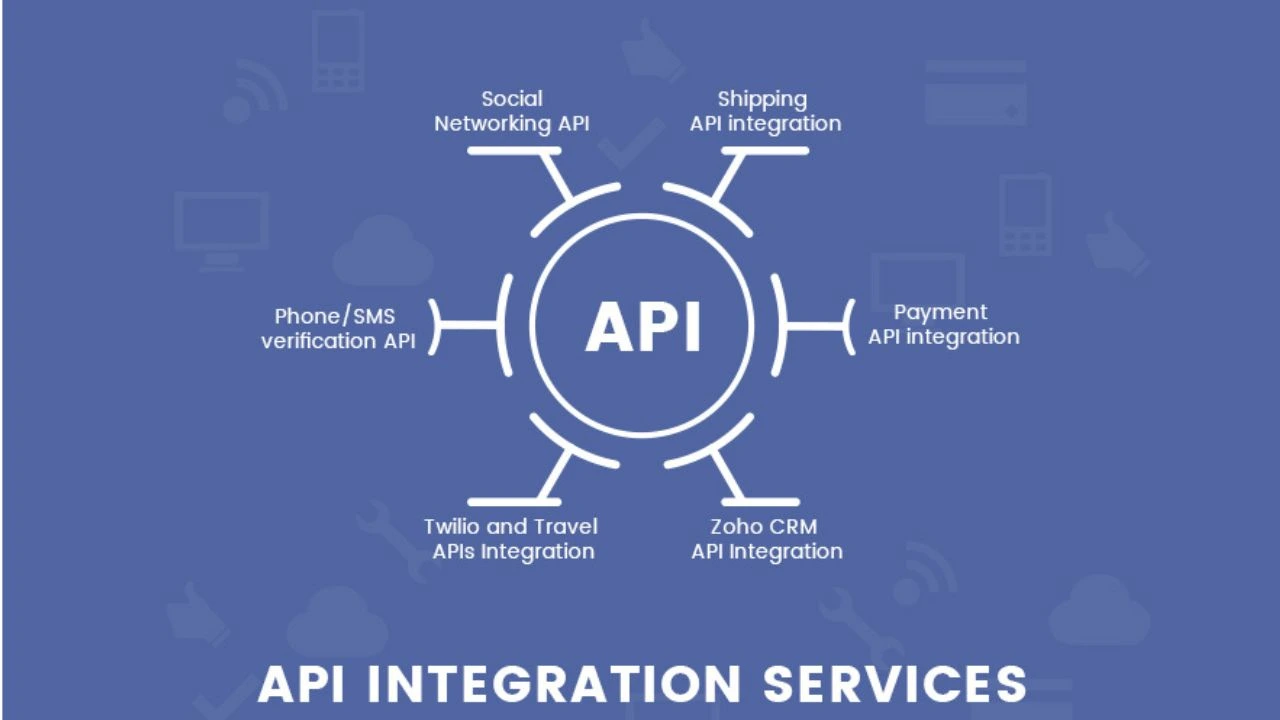
Revolutionizing Digital Landscapes Through API Integration
- August 07, 2023
API integration functions as the essential element which enables easy computer software application interaction inside digital systems today. Anyone working in development or business ownership or tech-related fields needs to understand API integration to maximize their potential in digital transformation. The document explores the complete elements of API systems alongside security mechanics and functional demonstrations along with direction prediction in order to enhance your API deployment framework.
Understanding API Integration
The connection of different software applications platforms and services by API Integration creates an effective process of data exchange and automated workflow management. APIs function as communication gateways between different systems so they can exchange data while disregarding what technologies drive these technologies.
Types of API Architectures
- RESTful APIs
(Representational State Transfer):
The most common API architecture, known for its simplicity and
scalability.
- GraphQL: A flexible and efficient alternative to
REST, allowing precise data queries.
- SOAP (Simple
Object Access Protocol):
A protocol-based API, often used in enterprise environments with strict
security requirements.
- Event-Driven
APIs & Webhooks:
Enables real-time data synchronization without constant polling.
Key
Benefits of API Integration
1.
Enhancing Operational Efficiency
API
integration enables better productivity together with error reduction by
establishing automated workflow management and complete manual entry
elimination.
2.
Enabling Real-Time Data Synchronization
Event-driven
APIs built alongside web hooks create an immediate system-wide data consistency
because they transmit application changes between connected systems.
3.
Driving Innovation & Scalability
Businesses
obtain power through APIs to use current platforms and connect third-party
services along with creating flexible microservices frameworks.
4.
Improving User Experience
Cross-platform
integration provides users with a single interface that connects multiple
applications which creates improved usability.
5.
Expanding Market Reach
Through
API exposure companies enable third-party developers to create new innovations
which extend software capabilities as demonstrated by Google APIs and Stripe
and Twilio.
Best
Practices for Successful API Integration
1.
Define Clear Objectives
Before
integrating an API, identify specific business goals, whether it's automating
workflows, enhancing security, or improving user engagement.
2.
Choose the Right API Type
Select
an API that aligns with your business needs, considering security,
compatibility, and scalability.
3.
Implement Strong Security Measures
- Use OAuth
2.0, JWT (JSON Web Tokens), and API Gateways for authentication.
- Encrypt data
with TLS/SSL protocols.
- Apply rate
limiting and access controls to prevent API abuse.
4.
Thorough Testing & Quality Assurance
Utilize
tools like Postman, Jest, or K6 for rigorous API testing before deployment.
5.
Maintain Comprehensive Documentation
Ensure
detailed API documentation using Swagger (Open API Specification) to facilitate
easy integration for developers.
Common
Challenges & Solutions
1.
Data Mapping Complexity
Data
standards differ between systems because they use JSON together with XML and
YAML file formats. ETL (Extract Transform Load) tools should be implemented to
normalize the data.
2.
API Versioning & Maintenance
APIs
evolve, and maintaining backward compatibility is crucial. Use versioning
strategies (v1, v2, etc.) and automated monitoring tools like API Metrics.
3.
Performance Optimization
- Implement caching
mechanisms (Redis, CDN caching).
- Optimize database
queries to reduce API response time.
- Monitor latency
metrics with tools like Data dog or New Relic.
4.
Security & Compliance Risks
- The
organization must maintain adherence to GDPR and CCPA and HIPAA and PCI
DSS regulatory standards.
- Audit
third-party APIs for potential security vulnerabilities.
Industry
Use Cases of API Integration
- E-Commerce: Shopify and Woo Commerce APIs enable
inventory synchronization across platforms.
- Finance
& Payments: Stripe and
PayPal APIs facilitate secure online transactions.
- Healthcare: APIs like HL7 and FHIR support electronic
health record (EHR) integrations.
- Cloud
Computing: Through
APIs provided by AWS and Google Cloud and Microsoft Azure businesses can
access server less computing as well as multiple cloud connectivity.
Future Trends in API Integration
- AI-Powered
APIs: AI-powered APIs operate to boost
both chatbots together with recommendation systems and predictively
analyze datasets.
- Server less
API Architectures: A
cloud-native on-demand execution environment lowers infrastructure
expenses for running APIs.
- Blockchain-Based
APIs: Ensuring tamper-proof
transactions in finance and supply chain industries.
- Quantum
Computing & APIs: The
next frontier for high-speed cryptographic processing.
Conclusion
The
foundation of modern digital-first success depends on API integration Service as the
essential procedure to achieve flawless collaboration and automated processes
while expanding business operations. The utilization of secure scalable APIs
enables businesses to establish lasting operations and create new innovative
solutions while presenting exceptional user interfaces to their customers. Embracing
the right API approach between RESTful APIs and Graph SQL alongside event-driven
architectures can lead to digital transformation of your system. Security
performance and compliance must always be prioritized to excel in your API
development strategy.
FAQs
About API Integration
1.
How does API integration benefit businesses?
API
integration boosts efficiency, real-time data exchange, scalability, and user
experience, leading to business growth.
2.
Can APIs work with different programming languages?
Yes,
APIs are language-agnostic, enabling interoperability between applications
built in different languages.
3.
What security risks should I consider?
Security
risks include data breaches, authentication flaws, and API endpoint attacks.
Implement OAuth, encryption, and API monitoring.
4.
How can I ensure my API integration scales effectively?
Choose scalable APIs, implement performance optimizations, and schedule regular security updates.

SHARE THIS BLOG